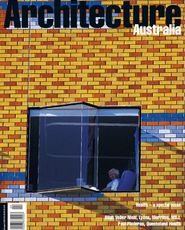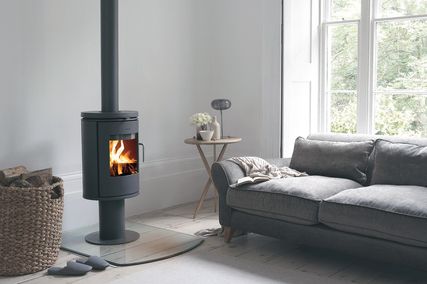Photos Trevor Mein.
Review
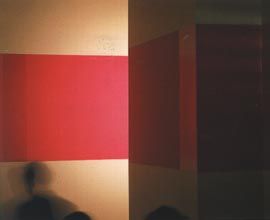
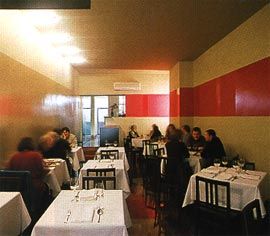
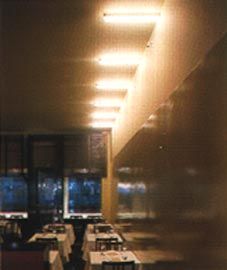
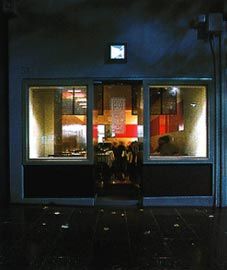
Ah Mu is named in the Age Good Food Guide as Melbourne’s “Best Malaysian”, a “modern restaurant in every sense”. There is a kind of analogical relationship between the sophisticated food and the refined interior in which it is presented. Each is both elegant and witty, familiar and unexpected. The fitout plays the kind of minimalist games that we have come to expect of stylish restaurants, but it does so with a twist, making it slightly strange – and rather more engaging.
With most of the budget spent on the workings of the kitchen, the intimate, elegant dining spaces are the result of simple inexpensive moves: the judicious insertion of planar elements into an old shop space and the thoughtful application of colour.
Opening directly off the street, a brief threshold space is implied by a narrow strip of remnant pressed-metal ceiling above the front of the lower dining space, and by various planes which accumulate around it, but never actually touch it. Two dark blade walls frame the entry, stopping short of this fragment. The main ceiling plane floats below and two perforated screens hang from the edge of this new ceiling. These simple spatial devices are skilful and effective, but what is remarkable about this interior is the use of colour and the exploration of the effects of surface characteristics on colour perception.
The lower dining room has been coated in a pale eau-de-Nil, with a vibrant pink band juxtaposed against it along one side – a kind of nuanced version of a complementary colour pair. Richness and depth is further generated through the rendering of these coloured surfaces – through the play of the gloss coat against the matt. These differing finishes reveal different aspects of the surface onto which they are painted – the matt seems to suck light in, while the reflections that glance off the new shiny skins betray the blemishes of the walls on which they are coated. These two conditions also lead to quite different impressions of the colours themselves.
On one side of the long space, the gleaming pale green wall becomes a kind of screen for hazy mirrored movement. Lights and cars from the road beyond, elegant fluid movements of the waiters, the more erratic, yet more restricted movements of the diners, the opposite wall – all blur into a soft moving sheen. This is punctuated by small pools of light thrown by a series of short fluorescent tubes marching along the top of the wall.
On the opposite wall the action is all above head height, and rather more dramatic. Here the glimmer comes from the play between different finishes, not the reflective properties of a single element. The singularity of the pink band is complicated by its segmentation into flat and shining sections. They have the same pigmentation, but perceptually this is not always clear. As one looks, these segments shift and change – the matt seems deeper, denser and darker, the gloss pushes forward, lifting out of the wall plane and picking up colour attributes from around the room.
Colours, especially colours such as these, are still often derided as the realm of the “decorator”. At Ah Mu a new coat of paint has lead to a speculative space where colour is active and architectural, and where we are reminded of the perceptual richness that might be created when light bounces off a surface allowing us to see the complexity of colour. This project has been completed for a year or two now, but – unlike certain other “architectural” restaurants in Melbourne – it still sparkles and intrigues. Both owners and diners have understood how to inhabit and enjoy it.
Justine Clark is assistant editor of Architecture Australia
Project Credits
Architect Kerstin Thompson Architects—Design architect Kerstin Thompson; project architect Michelle Black. Builder Smart and Cain.

